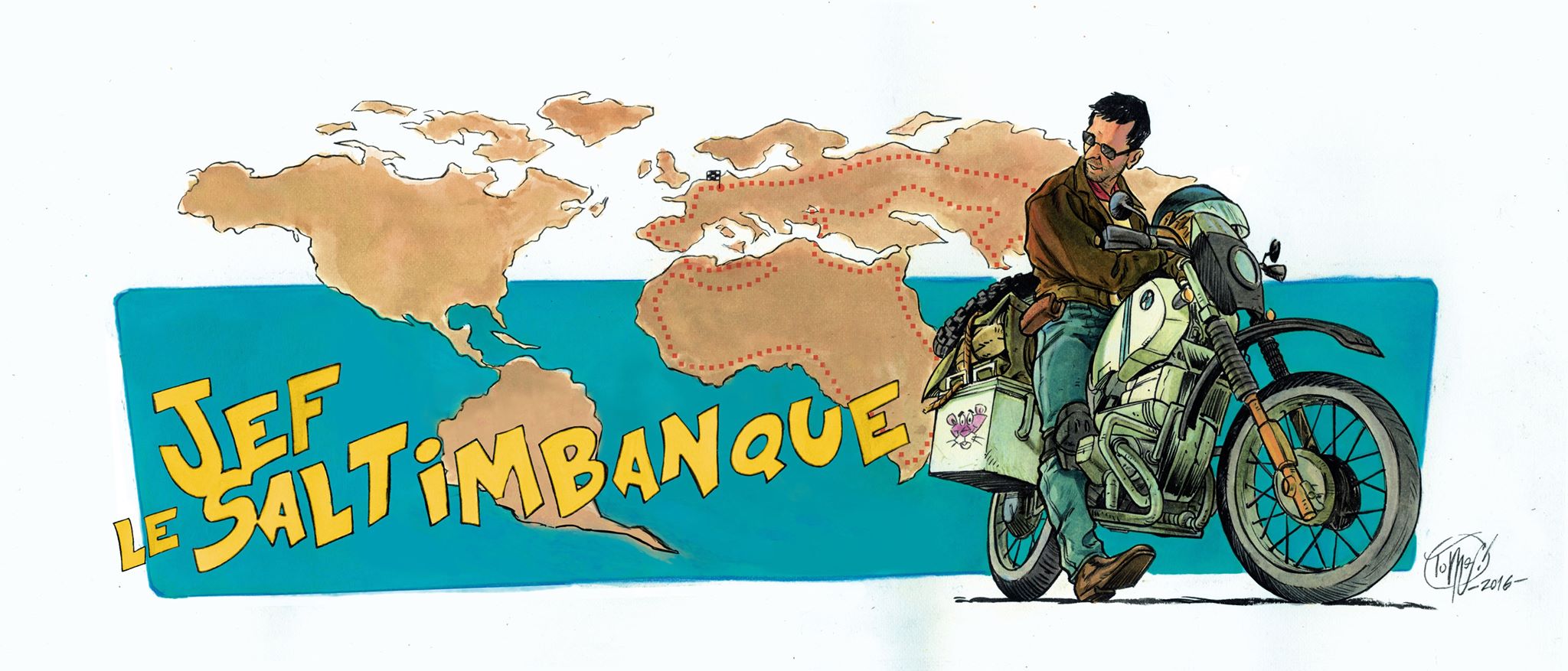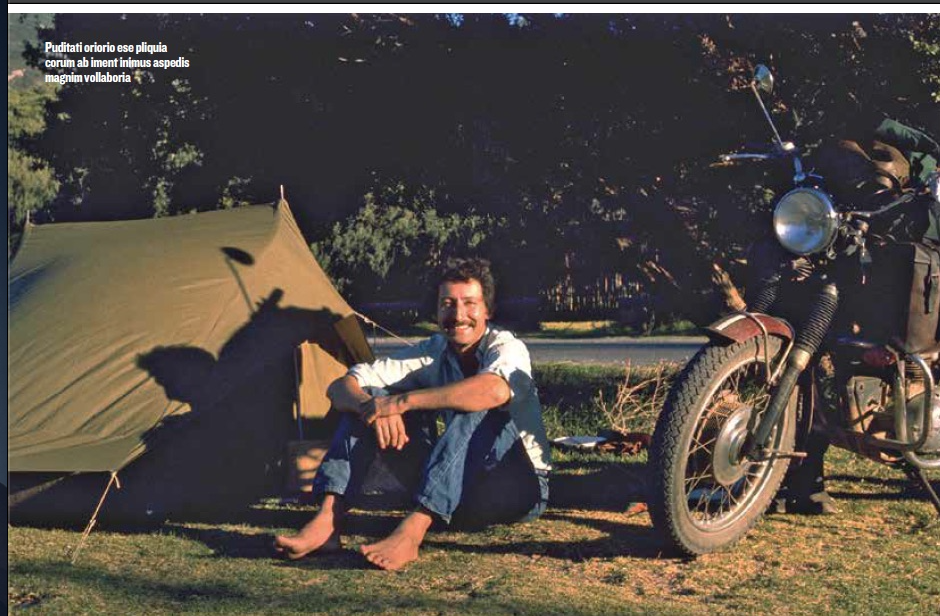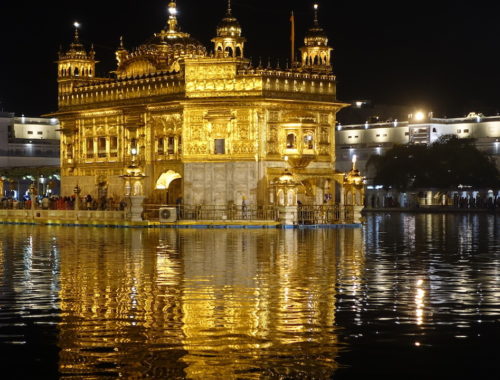Cet article est également disponible en : Français
This is the translation of an article published in a french Magazine : Road Trip N°43
On October 6, 1973, the Kippur War was declared. On the same day at 6 p.m., the holder of passport 535439A issued in London by the Ministry of Foreign Affairs left on his 177 kg Triumph Tiger Hundred empty. In the next day’s edition, The Sunday Times headlined: “Marathon Motard – Ted Simon left England yesterday for the first stage of his 80,000 km round the world motorcycle race…”
Ted Simon, the Journey of Jupiter, the legend. When the editor of Road Trip suggested that I write this article, I enthusiastically accepted. It was an opportunity for me to read this book, which had become almost impossible to find, especially in French edition. It was also the opportunity to answer this question that had always intrigued me: Why Jupiter?
The answer is at the beginning of the free, on page 36 to be precise. As very often in a journey, it begins with a hazard of fate, an unforeseen event, one of those events that seems anecdotal to you at the moment but that ultimately changes your life. In this case, it was a mistake on the route that took him away from Calcutta. As a misfortune never happens alone, he ran out of fuel somewhere towards Patna. But no matter the place, no matter the time, yesterday or today, in these cases the traveller lets himself be carried away by fate. That day, Ted let his bike “ride on the grass to a shady tree”. Shade is important when it’s hot. And then he waited. “Help would come, I had no doubt about that,” he said. And help came. Thus, a few days later, he was invited to a Rajput wedding, a warrior caste. Prostitutes, their bodies clenched in a sari, danced before him one of those hypnotic dances of which the Indians have the secret. The evening was already well advanced when a psychic took his hand and said to him: “You are Jupiter”.
In fact, Ted Simon’s journey began well before that famous October 6th. The whole of 1973 was devoted to preparing the trip. First of all, he has to learn to ride a motorcycle because as incredible as it may sound, Ted Simon is not a biker. Under some journalistic pretext, he managed to convince the Yamaha factory to lend him a 125 cc motorcycle. But he still has to go get it back. And how do you get out of a factory on a motorcycle without falling, even though… you’ve never ridden a motorcycle before? Nevertheless, he succeeds and is training hard. Despite this, he did not get the coveted sesame until his second attempt. The rest of his preparation consists in gathering the material he thinks is essential and imagining an itinerary by contemplating all the maps he has been able to gather. It is therefore a neophyte biker who is setting off on October 6, 1973 on the roads of the world. Neophyte, he is in every respect: he barely knows how to ride a motorcycle, has never really travelled and knows nothing about this immense African continent that he is about to face. Forget it, Africa will make its initiation. This will take up the whole year 1974.
The first serious difficulties appeared in Egypt, then in the middle of the Kippur War. Is it then his too candid attitude, or the fact that he is trying to photograph a Russian submarine? I don’t know, but the fact remains that he is arrested twice in the same day: he is thought to be an Israeli spy. Much later, in Brazil, he was once again mistaken for a spy, which resulted in 12 days of detention. A few days after his release, he kissed the young and pretty interpreter who had helped him to make himself understood during his detention. Stockholm syndrome? Or, additional proof, if necessary, that the worst galleys are often the prelude to magical moments?
A little further away in Sudan, south of Atbara to be precise, he learns about the desert, sand, galleys, falls and solidarity. It takes him more than three hours to travel barely 80 km and it is totally dehydrated that he arrives at a school lost in the middle of the desert. He finds lodging, food, and good company. He’s learning about fraternity. Besides, isn’t that why he’s here? To experience the fellowship? “I had to come here to discover the true stature of man; here in front of this cabin, on this coarse wooden bench…”
Further south, in Tanzania, Ted knows what he considers to be his first failure:
It crosses Tanzania in just three days. Three days during which he did not talk to any African except to buy gas. He then understands that the journey IS slow. Only slowness makes it possible to appreciate the distances and diversity of this world, only slowness makes it possible to meet glances and smiles. Slow is a guarantee of intensity and encounters. But in Tanzania, the road “too direct, too fast,… too far from the slow pace of the population”.
Little by little, Ted the neophyte, Ted the tender-foot gets hardened. He is no longer a simple traveller, he becomes a traveler. Action and reflection are intimately linked in him and “most of the West’s superfluities and certainties fall by the wayside”. He is passionate about this continent where “problems are, like oases, mirages that vanish as you approach”. He comes to question the order of the world, his certainties give way to doubts. He wondered about the effects of mass tourism, which was still in its infancy. He wondered about the interest of the road project crossing the African continent from North to South. “Anything that travels very far and very fast has little value, starting with the tourist. And more generally, it is beginning to perceive what the world will not perceive until years later: the harmful impact of mankind on the Earth. He also develops abilities that he did not know himself, becoming able to speak to strangers from the first moments, as if he had always known them. He learns about everything and anything: mushrooms, potatoes, cabbage, golden nematodes, farmers and elephants. He wants to understand the world, and to do so, he understands that he can only do so by being vulnerable enough to be able to transform it.
After Africa, the journey continued for 3 more years: 1975 – the Americas, 1976 – Australia and 1977 – Asia.
He returned to England with the conviction that “Truth only exists in human consciousness” and that each culture has its own truth: “Argentines are used to cheating, Arabs show their emotions and hide their wives; Australians display their wives but hide their emotions. Honesty is the norm in Sudan. In Thailand, dishonesty is normal, as is the giving of gifts to foreigners. »
Today, in 2017, Jupiter’s Journey, has become a legend. He is no longer just Ted Simon, now for generations of bikers he has become, Jupiter, that name given to him by a seer in India. That was his destiny. He opened the road to thousands of travellers who later set off to discover the world on their motorcycles. And just like Ted, they finally understood an unchanging truth about the journey. Traveling is not going anywhere. Travelling is going to be there. It is all these interruptions, these galleys, these pitfalls that, in the end, “are the very essence of a journey”. Yesterday as today, traveling is about accepting to face your destiny. Yesterday as today, to know the world, you have to “smell it, feel it under your feet, crawl. There is no other way…… Only then is the world immense.
In the prologue to the 2016 edition, he even adds: “Despite the wonders of technology and communication, our planet is still the same size and, in some place, somewhere on the surface of this colourful Earth, fascinating and unpredictable things continue to happen.
So, do as I do, take Jupiter’s advice: Travel!






No Comments